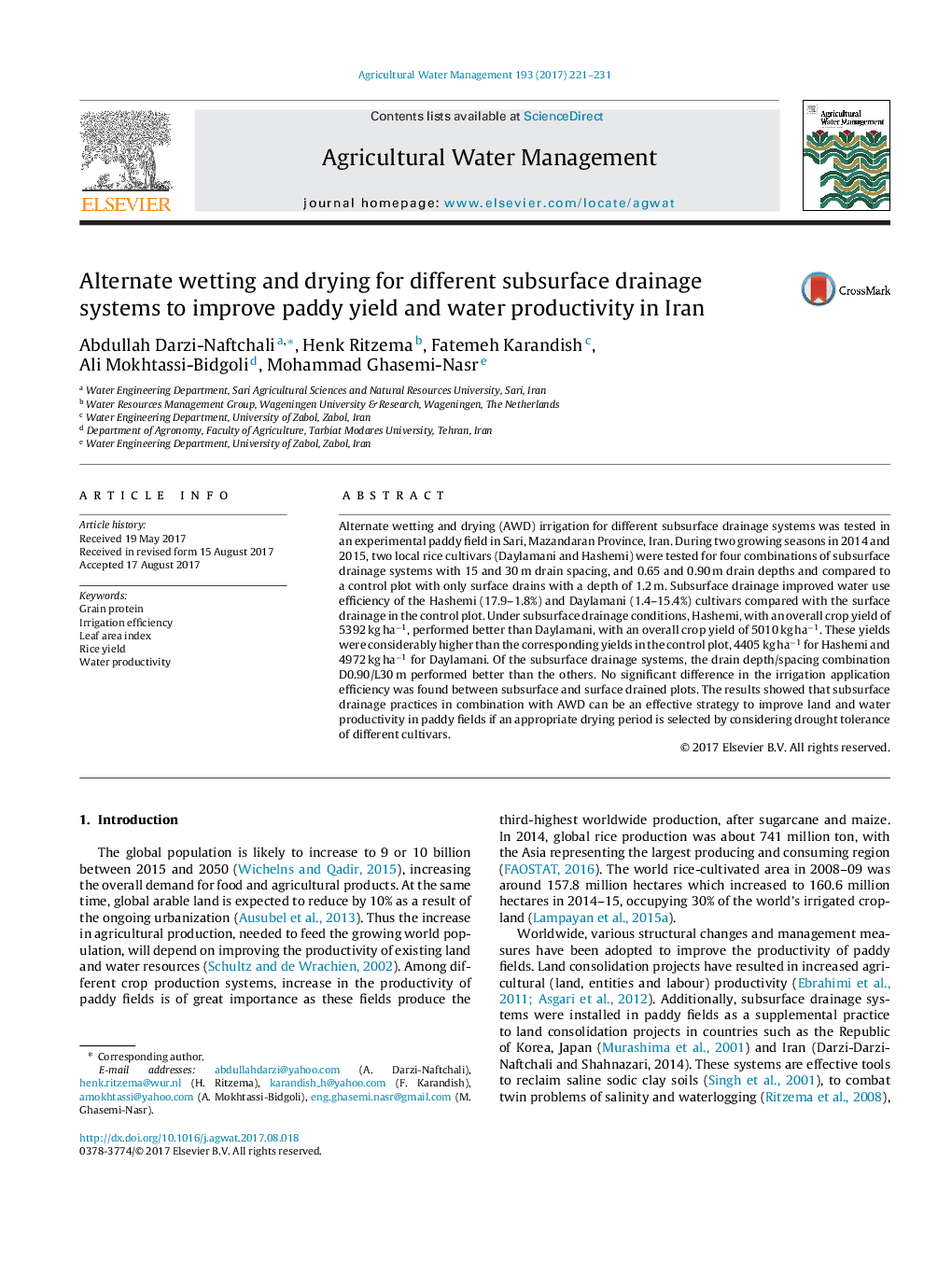| کد مقاله | کد نشریه | سال انتشار | مقاله انگلیسی | نسخه تمام متن |
|---|---|---|---|---|
| 5758273 | 1622887 | 2017 | 11 صفحه PDF | دانلود رایگان |
عنوان انگلیسی مقاله ISI
Alternate wetting and drying for different subsurface drainage systems to improve paddy yield and water productivity in Iran
ترجمه فارسی عنوان
خیساندن و خشک کردن جایگزینی برای سیستم های مختلف زهکشی زیرزمینی برای بهبود عملکرد بادمجان و بهره وری آب در ایران
دانلود مقاله + سفارش ترجمه
دانلود مقاله ISI انگلیسی
رایگان برای ایرانیان
کلمات کلیدی
پروتئین دانه راندمان آبیاری، شاخص منطقه برگ، عملکرد برنج، بهره وری آب،
موضوعات مرتبط
علوم زیستی و بیوفناوری
علوم کشاورزی و بیولوژیک
علوم زراعت و اصلاح نباتات
چکیده انگلیسی
Alternate wetting and drying (AWD) irrigation for different subsurface drainage systems was tested in an experimental paddy field in Sari, Mazandaran Province, Iran. During two growing seasons in 2014 and 2015, two local rice cultivars (Daylamani and Hashemi) were tested for four combinations of subsurface drainage systems with 15 and 30 m drain spacing, and 0.65 and 0.90 m drain depths and compared to a control plot with only surface drains with a depth of 1.2 m. Subsurface drainage improved water use efficiency of the Hashemi (17.9-1.8%) and Daylamani (1.4-15.4%) cultivars compared with the surface drainage in the control plot. Under subsurface drainage conditions, Hashemi, with an overall crop yield of 5392 kg haâ1, performed better than Daylamani, with an overall crop yield of 5010 kg haâ1. These yields were considerably higher than the corresponding yields in the control plot, 4405 kg haâ1 for Hashemi and 4972 kg haâ1 for Daylamani. Of the subsurface drainage systems, the drain depth/spacing combination D0.90/L30 m performed better than the others. No significant difference in the irrigation application efficiency was found between subsurface and surface drained plots. The results showed that subsurface drainage practices in combination with AWD can be an effective strategy to improve land and water productivity in paddy fields if an appropriate drying period is selected by considering drought tolerance of different cultivars.
ناشر
Database: Elsevier - ScienceDirect (ساینس دایرکت)
Journal: Agricultural Water Management - Volume 193, November 2017, Pages 221-231
Journal: Agricultural Water Management - Volume 193, November 2017, Pages 221-231
نویسندگان
Abdullah Darzi-Naftchali, Henk Ritzema, Fatemeh Karandish, Ali Mokhtassi-Bidgoli, Mohammad Ghasemi-Nasr,
